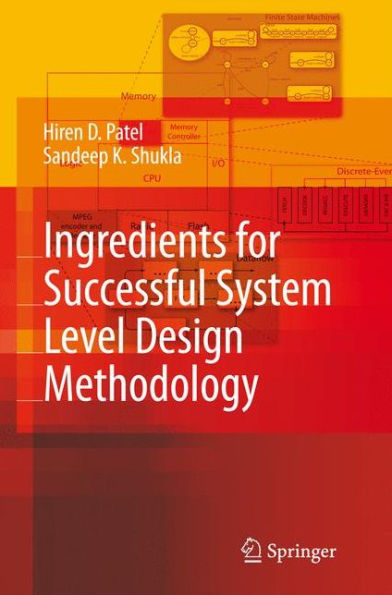Ingredients for Successful System Level Design Methodology
ESL or “Electronic System Level” is a buzz word these days, in the electronic design automation (EDA) industry, in design houses, and in the academia. Even though numerous trade magazine articles have been written, quite a few books have been published that have attempted to define ESL, it is still not clear what exactly it entails. However, what seems clear to every one is that the “Register Transfer Level” (RTL) languages are not adequate any more to be the design entry point for today’s and tomorrow’s complex electronic system design. There are multiple reasons for such thoughts. First, the c- tinued progression of the miniaturization of the silicon technology has led to the ability of putting almost a billion transistors on a single chip. Second, applications are becoming more and more complex, and integrated with c- munication, control, ubiquitous and pervasive computing, and hence the need for ever faster, ever more reliable, and more robust electronic systems is pu- ing designers towards a productivity demand that is not sustainable without a fundamental change in the design methodologies. Also, the hardware and software functionalities are getting interchangeable and ability to model and design both in the same manner is gaining importance. Given this context, we assume that any methodology that allows us to model an entire electronic system from a system perspective, rather than just hardware with discrete-event or cycle based semantics is an ESL method- ogy of some kind.
1101631553
Ingredients for Successful System Level Design Methodology
ESL or “Electronic System Level” is a buzz word these days, in the electronic design automation (EDA) industry, in design houses, and in the academia. Even though numerous trade magazine articles have been written, quite a few books have been published that have attempted to define ESL, it is still not clear what exactly it entails. However, what seems clear to every one is that the “Register Transfer Level” (RTL) languages are not adequate any more to be the design entry point for today’s and tomorrow’s complex electronic system design. There are multiple reasons for such thoughts. First, the c- tinued progression of the miniaturization of the silicon technology has led to the ability of putting almost a billion transistors on a single chip. Second, applications are becoming more and more complex, and integrated with c- munication, control, ubiquitous and pervasive computing, and hence the need for ever faster, ever more reliable, and more robust electronic systems is pu- ing designers towards a productivity demand that is not sustainable without a fundamental change in the design methodologies. Also, the hardware and software functionalities are getting interchangeable and ability to model and design both in the same manner is gaining importance. Given this context, we assume that any methodology that allows us to model an entire electronic system from a system perspective, rather than just hardware with discrete-event or cycle based semantics is an ESL method- ogy of some kind.
109.99
In Stock
5
1

Ingredients for Successful System Level Design Methodology
208
Ingredients for Successful System Level Design Methodology
208
109.99
In Stock

Product Details
| ISBN-13: | 9781402084713 |
|---|---|
| Publisher: | Springer Netherlands |
| Publication date: | 06/23/2008 |
| Edition description: | 2008 |
| Pages: | 208 |
| Product dimensions: | 6.10(w) x 9.25(h) x 0.02(d) |
From the B&N Reads Blog
